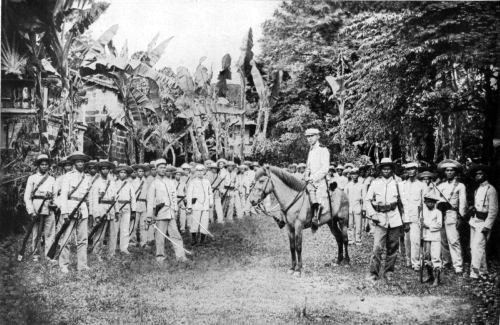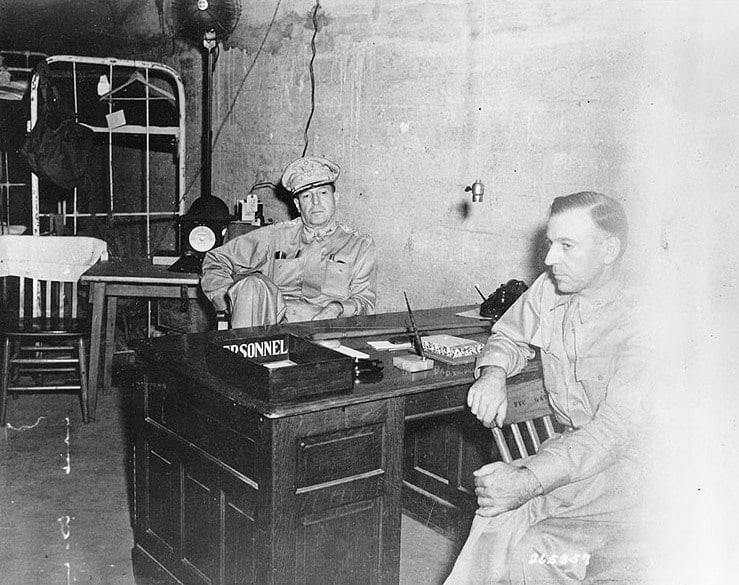This Week in History recalls memorable and decisive events and personalities of the past.
5th February 1945 – Second World War: General Douglas MacArthur returns to Manila

The Spanish-American War of 1898 handed much of the remains of the crumbling Spanish Empire to the United States. Some of these territories, such as Puerto-Rico, remain part of the US to this day.
One of the captured territories was the Philippines, which during the Spanish-America War, declared independence from Spain.

This was not accepted by either Spain or the United States and the Philippine government was crushed.

By 1913, the Philippines was pacified and became first an unincorporated territory of the United States, and later was made a US Commonwealth in 1935, a semi-independent entity with the goal of gaining eventual independence. This new state’s defence would be the responsibility of the US, assisted by a Philippine army.
In 1937, the Empire of Japan launched the Second Sino-Japanese War, mounting a full-scale invasion of China with the objective of subjugating it and making it a Japanese puppet state, which would be part of the Japanese-conceived Greater East Asia Co-Prosperity Sphere.

Despite the superior quality of the Japanese army and the extreme brutality it utilized, it struggled to subdue massive China and the huge Chinese armies opposing it. As the war dragged on, the demand for ever greater resources mounted for the Japanese needed ever-more resources to keep the war going. Being resource-poor, Japan to a large extent relied on the European colonies in South-East Asia, or the United States, for steel and oil to fuel its war machine.
However, the incredible brutality of its invasion of China – and Tokypo’s flirtation with the fascist dictators of Europe – had turned the Europeans and Americans against Japan, prompting sanctions on the Japanese and the flying in of supplies to help the Chinese.

In response to this, the Japanese leadership devised a plan to launch a surprise attack to quickly capture the European colonies in South-East Asia, attack and destroy the American fleet at Pearl Harbour, and capture the island chains of the Pacific to use as airbases to defend Japan from any counterattack. This included the Philippines.

Shortly after the attack on Pearl Harbour, the Japanese launched their attack on the Philippines, with troops landing on 8 December 1941 on the northern parts of the islands. The poorly equipped and trained Philippine army, and the lack of air support from the Americans, soon saw the Japanese make rapid advances.
The Philippine garrison was commanded by American general Douglas MacArthur, a veteran of the First World War. In late December MacArthur ordered what troops he had to withdraw to Bataan on the main Philippine Island of Luzon to hold out until reinforcements could be sent from America.

American forces would hold out for three months, but no reinforcements could be sent. As the situation deteriorated, MacArthur was ordered to abandon his troops and evacuate himself from the Philippines on 11 March 1942. Deeply humiliated, he declared shortly thereafter: ‘I shall return.’
The war raged on through 1942 and beyond. By mid-1944 the Allies had finally established bases in range of the southernmost part of the Philippines and could begin bombing Japanese positions there. After much lobbying by MacArthur for an invasion under his command to retake the Philippines, he returned as promised: on 20 October 1944 the American army, with MacArthur at its head, landed in the Philippines once again.
Over the next few months, 1.2 million Americans and tens of thousands of Philippine guerrilla fighters would slowly drive back the 529 000 Japanese defenders.

Finally on 5 February 1945, MacArthur returned to the Philippine capital city of Manila.
Many Japanese troops would however continue to fight, even beyond the end of the war. Most famously, Second-Lieutenant Hiroo Onoda continued fighting until 1974.

If you like what you have just read, support the Daily Friend

